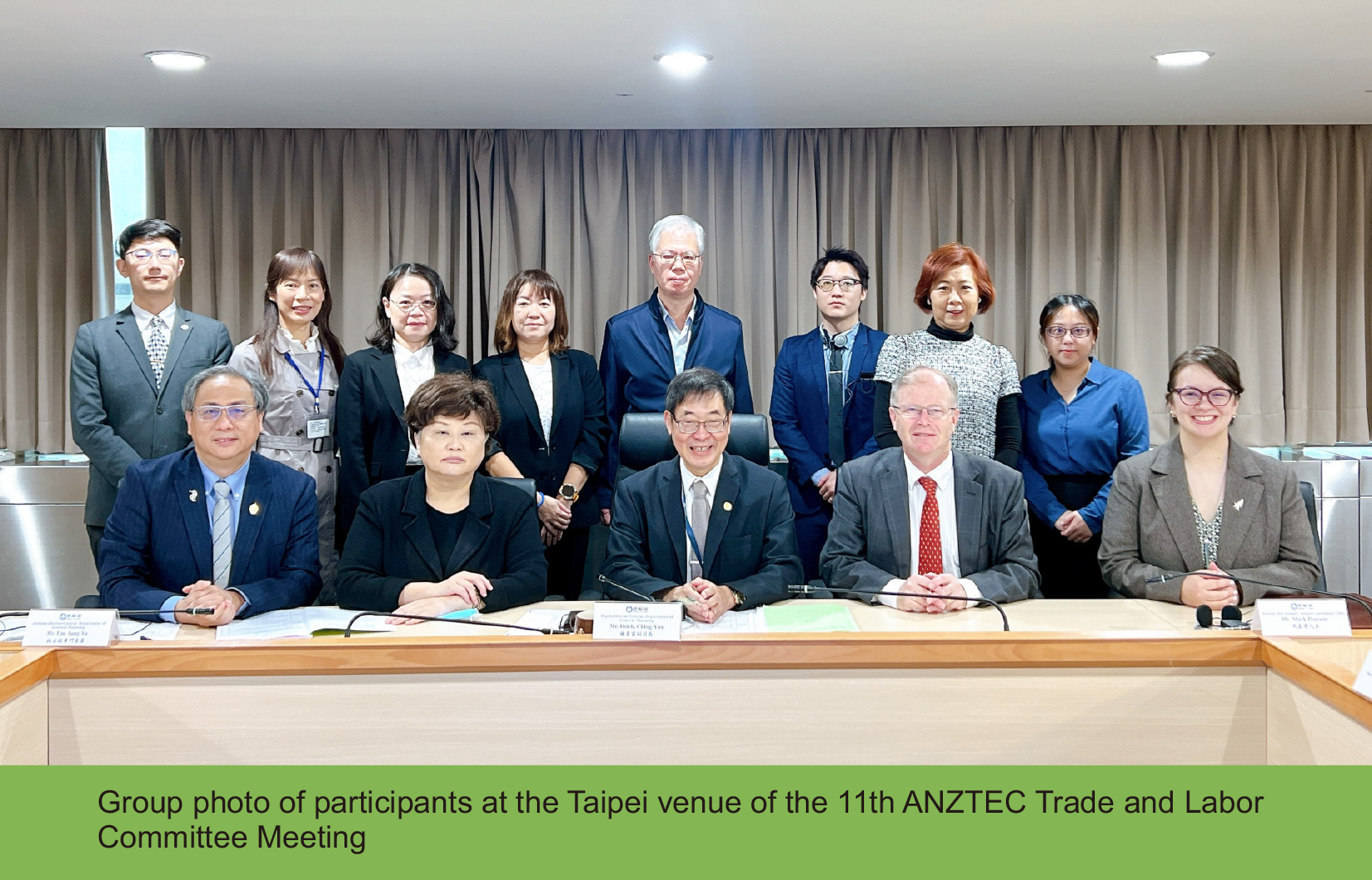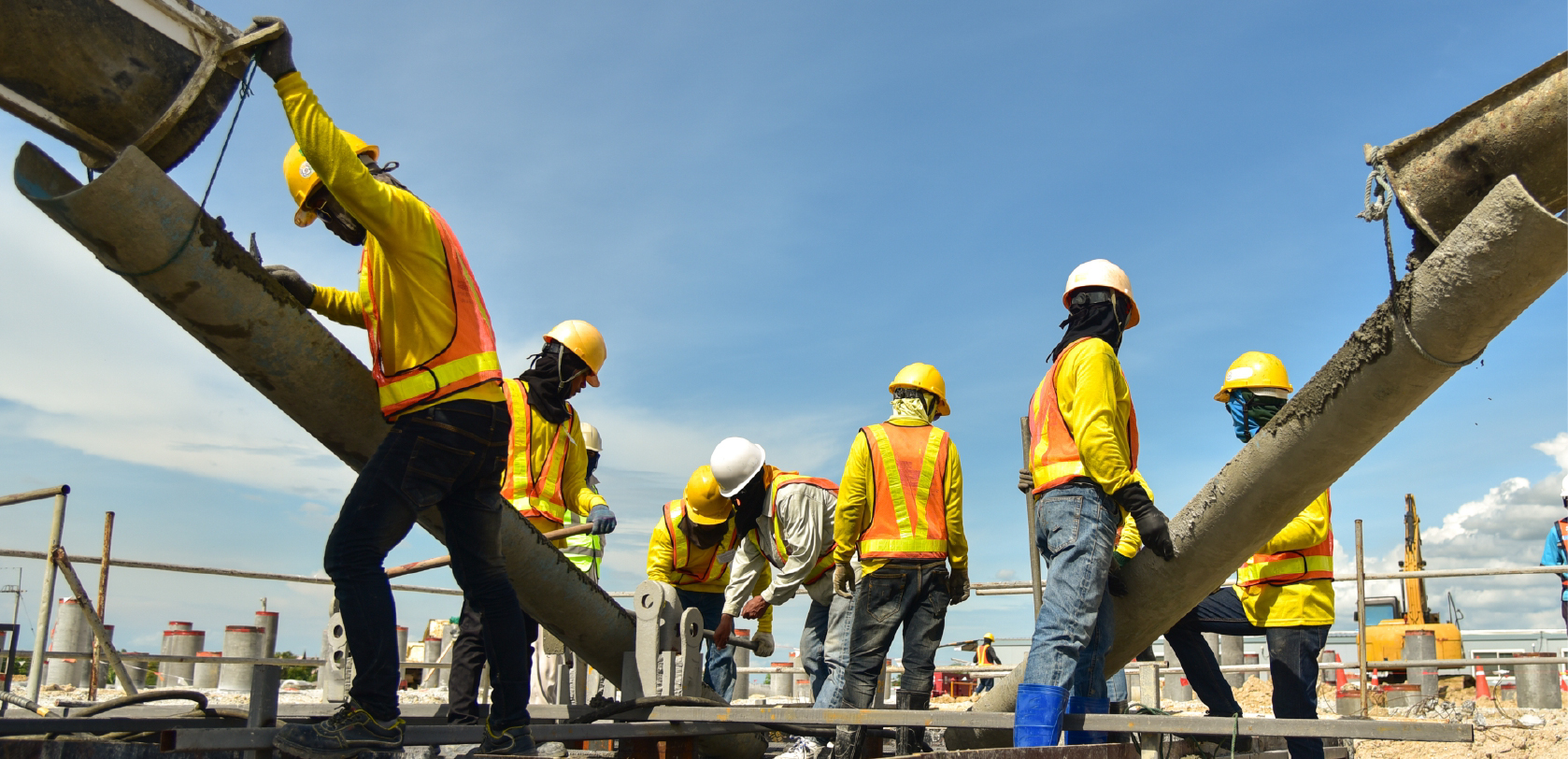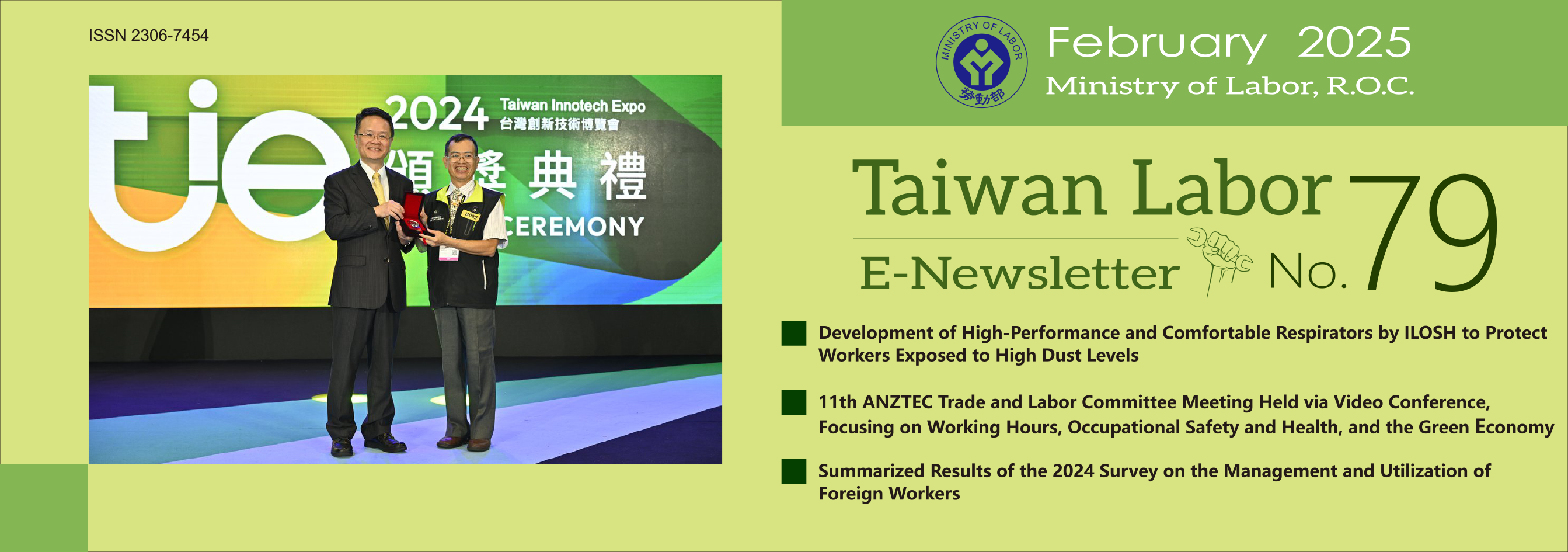NO.79
- Last updated:2025-02-26
- Clicks on the following title, but browses this article fast
- Policies & Regulations The MOL Launches the 2025 Spring Safety Enhanced Labor Inspection Plan, Urging Businesses to Remain Vigilant in Preventing Workplace Accidents During the Lunar New Year Four Years of the Middle-aged and Elderly Employment Promotion Act: Upgraded Employment Protection The MOL Announces 2025 Labor Occupational Accident Insurance Premium Rates, Averaging 0.21% Across All Business Categories
- News Outlook 11th ANZTEC Trade and Labor Committee Meeting Held via Video Conference, Focusing on Working Hours, Occupational Safety and Health, and the Green Economy Summarized Results of the 2024 Survey on the Management and Utilization of Foreign Workers Development of High-Performance and Comfortable Respirators by ILOSH to Protect Workers Exposed to High Dust Levels
The MOL Launches the 2025 Spring Safety Enhanced Labor Inspection Plan, Urging Businesses to Remain Vigilant in Preventing Workplace Accidents During the Lunar New Year

On January 7, 2025, the Ministry of Labor (MOL) launched a 37-day 2025 Spring Safety Enhanced Labor Inspection Plan to ensure businesses implement various occupational safety, health, and disaster prevention measures, while also taking steps to prevent overwork and workplace violence during the year-end period.
Minister Hung, Sun-Han visited the National Federation of Chinese Construction Workers' Unions (NFCCWU) on January 7, engaging in discussions with presidents of member unions to gather suggestions on labor rights and occupational safety. He emphasized that as the year-end approaches, all industries should prioritize workplace safety and avoid risks arising from rushing to meet deadlines.
Minister Hung highlighted that the construction industry is a cornerstone of national economic development that plays a critical role in domestic infrastructure projects. As a high-risk sector, it is essential to actively enhance safety awareness and improve worker welfare. He encouraged unions to provide suggestions for strengthening operational safety, assuring that the MOL will collaborate with unions to create a safer working environment. President Lin, Lien-Chu of the NFCCWU noted that the construction industry requires both physical strength and technical expertise, with a relatively hazardous work environment making safety critical. Therefore, the federation will continue its efforts to raise safety awareness among members and strengthen operational safety and health measures.
The MOL reminded employers and supervisors to reinforce operational safety management. During the Spring Safety period, inspection agencies will conduct over 4,000 inspections to ensure industry establishments implement disaster prevention mechanisms and safeguard workers' rights. At least 30 advocacy events will also be held to improve safety and health management capabilities of industry establishments. Violations of the Labor Standards Act may incur fines ranging from NT$20,000 to NT$1,000,000 per violation, while violations of the Occupational Safety and Health Act may lead to fines of up to NT$300,000 per violation. Furthermore, businesses found to pose an immediate danger to workplace safety may face work stoppages.
The MOL stressed that punishment is not the goal—ensuring employers make meaningful improvements is the priority. Industry establishments must implement various safety measures and occupational safety and health management systems. While requiring workers to increase productivity or meet deadlines, safety measures and management at the workplace must not be neglected. If there is a need to extend working hours or flexibly adjust rest days, such changes must comply with relevant provisions of the Labor Standards Act. Industry establishments must remain vigilant in preventing workplace accidents during the festive season, ensuring that every worker enjoys a safe and peaceful Lunar New Year.
Keywords: 2025 Spring Safety, Enhanced Labor Inspection, Workplace Accident Prevention During the Lunar New Year
Four Years of the Middle-aged and Elderly Employment Promotion Act: Upgraded Employment Protection

Since the implementation of the Middle-aged and Elderly Employment Promotion Act (hereafter referred to as the Act) on December 4, 2020, over 400,000 middle-aged and elderly workers have joined the workforce. In response to current labor market conditions, amendments to certain provisions of the Act were announced on July 31, 2024, and came into effect on December 4, 2024. These amendments aim to strengthen the promotion of part-time work models, delayed retirement, and retirement reemployment preparation. They also foster collaboration among various government agencies to develop industry opportunities and protect the employment rights of middle-aged and elderly workers.
To enhance labor participation among middle-aged and elderly individuals, the Ministry of Labor (MOL) has actively implemented the Act by offering targeted assistance tailored to the needs of unemployed, employed, and retired individuals. On May 1, 2023, the MOL collaborated with 10 other government agencies to launch the Middle-aged and Elderly Employment Promotion Plan (2023–2025), encouraging employers to hire and support middle-aged and elderly workers in maintaining their employment. The recent amendments not only strengthen the promotion of part-time work models and delayed retirement, enabling middle-aged and elderly individuals to choose suitable work and job formats, but also expand the eligibility for retirement reemployment preparation subsidies. The eligibility has been broadened from workers aged 64 and above to include those who meet the criteria for voluntary retirement under Article 53 of the Labor Standards Act or are aged 63 and above. Additionally, the amendments emphasize collaboration between various government agencies to develop suitable employment opportunities.
The MOL encourages employers to recognize and leverage the strengths of middle-aged and elderly workers, helping them continue to contribute their expertise and skills. The MOL remains committed to implementing various assistance measures, monitoring current labor market trends, and refining strategies in response to societal needs. Through comprehensive support, the MOL seeks to encourage employers to hire middle-aged and elderly individuals, delay their retirement, and facilitate their retirement reemployment, ultimately creating an employment environment conducive to the needs of these workers.
Keywords: Middle-aged and Elderly Employment Promotion Act, Delayed Retirement, Retirement Reemployment Preparation
The MOL Announces 2025 Labor Occupational Accident Insurance Premium Rates, Averaging 0.21% Across All Business Categories

On November 7, 2024, the Ministry of Labor (MOL) announced amendments to the Table of Business Category and Premium Applicable for the Labor Occupational Accident Insurance, aligning its name with the implementation of the Labor Occupational Accident Insurance and Protection Act (hereafter referred to as the Occupational Accident Insurance Act). The amended table, renamed the Table of Business Category and Premium Applicable for Labor Occupational Accident Insurance, took effect on January 1, 2025. Following the amendments, the average premium rate across all business categories is 0.21%.
The Occupational Accident Insurance Act, implemented on May 1, 2022, broadens insurance coverage, raises the upper and lower limits of insurance salaries, enhances various benefits, and allocates funds for occupational accident prevention and rehabilitation programs. The premium rates for labor occupational accident insurance (hereafter referred to as accident insurance) comprise a business category accident premium rate and an on and off duty accident flat premium rate. The rates are adjusted every three years based on actual insurance revenue, expenditures, and actuarial results, drafted by the MOL, approved by the Executive Yuan, and then announced. This is the first actuarial adjustment of premium rates conducted in accordance with the Occupational Accident Insurance Act since its implementation. The applicable business categories remain unchanged, with 55 business classifications. The highest business category accident premium rate is 0.89% (for crude petroleum and natural gas mining, sand and gravel extraction, and other mining industries), while the lowest is 0.05% (for five industries: electronic component manufacturing, computer application programming, financial services, education, and healthcare). The average is 0.14%. The on and off duty accident flat premium rate remains unchanged at 0.07%, consistent with the current rate. As a result, the average premium rate across all business categories will increase slightly from the current 0.19% to 0.21%.
The premium rates have been adjusted based on actuarial results to account for the more comprehensive protection measures under the Occupational Accident Insurance Act. However, they remain low, ensuring that they do not place an excessive burden on employers or employees. For business categories experiencing premium rate increases, the average additional monthly premium per employee will be NT$5.64. The MOL emphasizes that employers are legally obligated to enroll their workers in accident insurance. This ensures that in the event of insured events such as an occupational injury or illness, the affected workers and their families can receive adequate benefits and protection. Employers can also share in the responsibility for occupational accident compensation under the Labor Standards Act, contributing to the stability of business operations and benefiting both employers and employees.
Keywords: Labor Occupational Accident Insurance, Labor Occupational Accident Insurance Premium Rate, Business Category Accident Premium Rate
11th ANZTEC Trade and Labor Committee Meeting Held via Video Conference, Focusing on Working Hours, Occupational Safety and Health, and the Green Economy

The 11th ANZTEC Trade and Labor Committee Meeting was held via video conference on the morning of November 26, 2024, Taipei time. Representing New Zealand were General Manager Anna Clark of Workplace Relations and Safety Branch, Manager Nita Zodgekar of International Labour Policy, and Senior Policy Advisor Andy Beaufort of the Ministry of Business, Innovation and Employment (MBIE). Director Mark Pearson of New Zealand Commerce and Industry Office (NZCIO), Taipei, and Director Howard Song of Taipei Economic and Cultural Office (TECO), Wellington, also attended the meeting in person.
The meeting began with presentations on the labor situation developments in both countries, followed by in-depth discussions on working hours and employer-employee relations. Taiwan shared its working hour system and flexible childcare measures, while New Zealand provided updates on its progress in amending the Holidays Act. The two sides also exchanged views on occupational safety and health, with Taiwan introducing its designation of 2024 as the Year of Fall Prevention in Construction and New Zealand sharing updates on the amendment of its Health and Safety at Work Act 2015. Continuing the discussions on the green economy from the previous (10th) meeting, the two sides shared research findings on economic transitions aligning with net-zero trends and talent training initiatives. Lastly, it was agreed that the 12th meeting would be held in Taipei next year to further discuss and exchange views on key labor-related issues.
Keywords: ANZTEC, New Zealand, Green Economy
Summarized Results of the 2024 Survey on the Management and Utilization of Foreign Workers

To understand the perspectives of the industry and household employers on foreign worker management, utilization, and related policies, the Ministry of Labor (MOL) conducted a Survey on the Management and Utilization of Foreign Workers from July to August 2024, with 8,554 effective samples (4,538 from industry and 4,016 from household employers). The results of the survey are summarized as follows:
I. Industries (manufacturing and construction foreign workers)
(I) In June 2024, the average regular earnings for foreign workers in industries increased by approximately NT$1,500 (+5.3%) over the previous year to NT$29,000, primarily due to adjustments in the minimum wage. Including overtime pay (NT$5,000), the total earnings increased by NT$2,000 (+6.3%) over the previous year to NT$33,000. From July 2023 to June 2024, employed foreign workers received NT$15,000 in irregular earnings (e.g., annual, mid-year, holiday bonuses, or performance awards). In June 2024, regular working hours decreased by 15.2 hours over the previous year to 152.2 hours, while overtime hours increased by 1.9 hours over the previous year to 26.9 hours. These changes were primarily attributed to an increase in weekends and national holidays during the month.
(II) In June 2024, 40.6% of the manufacturing industry had applied for additional foreign workers. Of these, 24.4% did not fully utilize the approved quota, primarily due to "cost considerations" (9.3%). Among manufacturing industries that did not apply for additional foreign workers, 39% reported that "current foreign workers already meet labor needs."
(III) In June 2024, 39.7% of the industry managers utilizing foreign workers reported encountering challenges, and the primary challenge was "language barriers" (27.6%).
II. Household employers (foreign family nursing workers)
(I) In June 2024, the average regular earnings for foreign family nursing workers increased by NT$1,000 (+5.3%) over the previous year to NT$21,000, primarily due to adjustments in household foreign worker minimum earnings. Including overtime pay (NT$3,000), the total earnings increased by NT$2,000 (+7%) over the previous year to NT$24,000. From July 2023 to June 2024, employed family nursing workers received NT$7,000 in irregular earnings (e.g., annual or other bonuses). In June 2024, foreign family nursing workers worked 10.3 hours on average per day.
(II) In June 2024, 57% of foreign family nursing workers were granted monthly leave, with "one day off" being the most common (36.4%). All employers who did not grant leave compensated workers with overtime pay.
(III) In June 2024, 34.7% of the household employers utilizing foreign family nursing workers reported encountering challenges, and the primary challenge was "language barriers" (23.8%).
Keywords: Foreign Workers, Foreign Worker Management, Foreign Worker Wages, Challenges in Utilizing Foreign Workers
Development of High-Performance and Comfortable Respirators by ILOSH to Protect Workers Exposed to High Dust Levels

To address the challenges faced by workers in high-risk dusty environments due to prolonged respirator wearing, the Institute of Labor, Occupational Safety and Health (hereafter referred to as ILOSH) under the Ministry of Labor (MOL) has developed a breath-responsive powered air-purifying respirator (BR-PAPR). This device enhances protective performance and alleviates issues plaguing workers such as concerns about leakage due to poor fit and breathing difficulties. The BR-PAPR has been granted a Taiwan invention patent and won a silver medal in the 2024 Taiwan Innotech Expo invention contest, competing against 600 domestic and international entries, fully demonstrating ILOSH's forward-looking innovation and technological capabilities.
Work environments may contain harmful airborne substances. Business entities should effectively control the release of harmful substances through engineering control and administrative management, and take appropriate respiratory protection measures when necessary and based on the characteristics of the harmful substances. Workers engaged in high-risk dusty tasks such as welding, casting, and pandemic prevention require high-protection respirators. However, wearing respirators for a long time may cause problems such as breathing difficulties (inadequate air intake), stuffiness, and leakage due to poor fit.
Integrating various technologies, ILOSH developed the BR-PAPR, a high-performance and comfortable respirator designed to "assist breathing mechanically, and supply slightly more air than required for inhalation." This provides workers with enhanced protection while alleviating issues such as heat, humidity, and breathing discomfort caused by respirator use. This R&D achievement is built upon ILOSH's extensive experience in respirator research, optimizing and adjusting valve and fan designs to effectively address issues of poor fit and leakage. By integrating pressure sensing and smart control technologies, the breath-responsive system provides high-quality breathing assistance, effectively improving user comfort and battery endurance. To thoroughly understand the potential issues workers may encounter while using the device in actual work environments, ILOSH is producing a batch of test samples and inviting workers exposed to high dust levels to assist in evaluations and provide feedback for improvements. This will support future mass production and broader application, benefiting workers.
Keywords: Respirator, Dust Exposure Workplace, Breath-Responsive Powered Air-Purifying Respirator (BR-PAPR)
- Source:Department of General Planning
- Publication Date:2025-02-27
- Count Views:
File
- Taiwan Labor E-Newsletter No79 pdf

